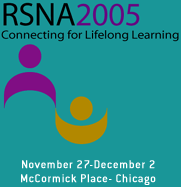
Abstract Archives of the RSNA, 2005
Matthew B Morgan MD, Presenter: Nothing to Disclose
Barton F. Branstetter MD, Abstract Co-Author: Nothing to Disclose
David M. Lionetti BA, Abstract Co-Author: Nothing to Disclose
Paul Joseph Chang MD, Abstract Co-Author: Nothing to Disclose
In a busy multi-user PACS environment, interpretation of urgent cases may be delayed if the filtering and sorting mechanisms of the radiologist’s worklist are not optimized. The purpose of this study is to determine if the time to interpretation for high-priority studies can be reduced with implementation of a tool that automatically and dynamically prioritizes the radiologist’s worklist.
The study was conducted at a large university hospital (>1 million studies/year) with active trauma and emergency departments. For the purposes of this study, two groups of examinations were considered “urgent”: (1) examinations performed on patients in the emergency room, and (2) examinations for which a preliminary reading was supplied by either a radiology resident or a clinician. The radiologists’ default worklist is filtered by division and sorted by study time. We developed a software algorithm that dynamically re-prioritizes the worklist such that urgent examinations are sorted to the top of the list and marked as urgent. To assess the impact of this system, we compared the time completion to final interpretation of urgent studies during the 30 days prior to implementation and the 30 days after implementation in the Division of Neuroradiology. Average times were compared using a Mann-Whitney test, and variances in time were compared using an F-test.
After implementation of the dynamically sorted worklist, the average time from study completion to final interpretation decreased from 9.6 to 7.8 hours (p<0.05) for urgent studies (N=520). The standard deviation of these interpretation times decreased from 9.1 hours to 6.3 hours (F statistic = 2.09, F critical = 1.17 at p = 0.05), indicating more consistent quality of service.
Automated dynamic sorting of worklists can provide the radiologist with useful decision support for choosing high-priority cases to be dictated first.
M.B.M.,B.F.B.,D.M.L.,P.J.C.: Laboratory support from Stentor, Inc. DARPA NLM NIH US Air Force
Morgan, M,
Branstetter, B,
Lionetti, D,
Chang, P,
The Prioritized Worklist: A Context-specific Decision Support Tool That Improves Radiologist Response Time for Urgent Examinations. Radiological Society of North America 2005 Scientific Assembly and Annual Meeting, November 27 - December 2, 2005 ,Chicago IL.
http://archive.rsna.org/2005/4410152.html

